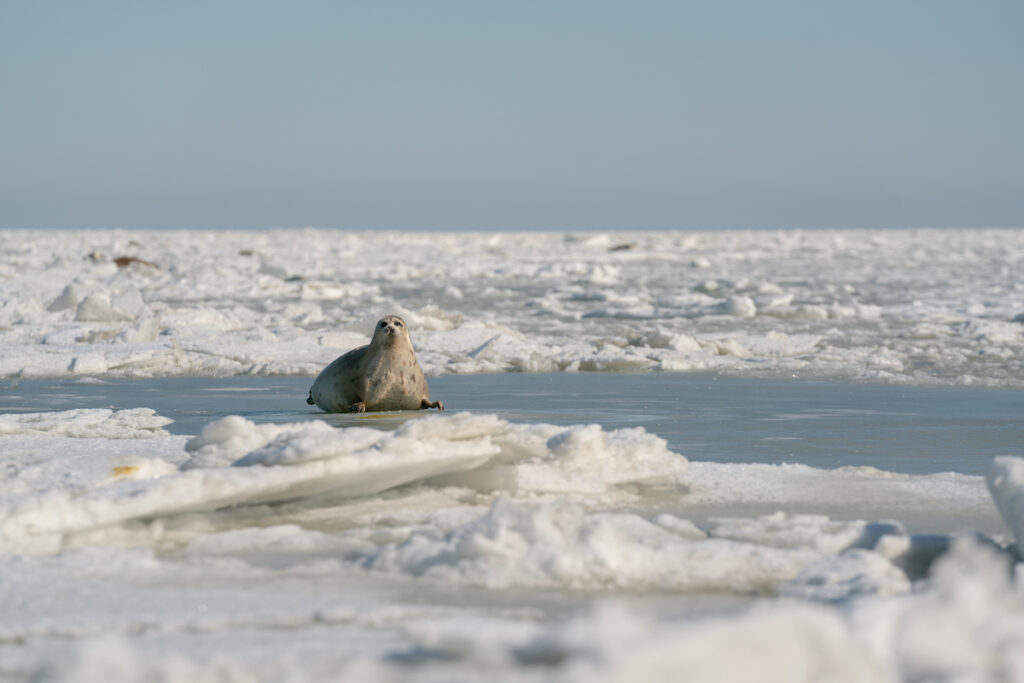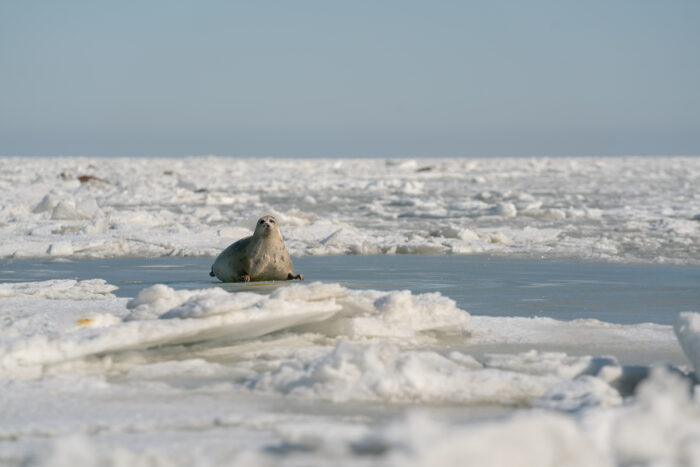The Caspian Sea is shrinking at an alarming rate due to climate change, causing widespread ecological and economic concerns. New research, led by the University of Leeds in collaboration with Dr. Mirgaliy Baimukanov (Institute of Hydrobiology & Ecology), and Dr. Altynay Kaidarova and Ms. Aselle Tasmagambetova (Central Asian Institute of Ecological Research), shows that even moderate drops in water level could drastically affect Kazakhstan’s northern Caspian coastline—resulting in habitat loss for endangered species, disruption of fishing and shipping industries, and risks to public health.

- Kazakhstan’s section of the Caspian Sea is exceptionally shallow, making it highly vulnerable to falling water levels. The northeastern shoreline has already receded by over 50 km since 2001, converting thousands of square kilometers of former water-covered areas into dry land.
- Under a conservative scenario of 5 m decline in Caspian Sea level, up to 60% of designated Ecologically or Biologically Significant Areas (EBSAs) in Kazakhstan’s portion of the Caspian could be lost. If water levels drop 10 m, the loss could be over 80%, threatening critical habitats and undermining conservation efforts.
- Coastal cities such as Aktau—one of Kazakhstan’s key Caspian ports—and associated industries (e.g., oil and gas installations in the northern basin) risk being stranded tens or even hundreds of kilometers from the new shoreline. This would require large-scale infrastructure adjustments and generate significant economic costs for the country.
- The Caspian seal, an endangered species and the region’s only endemic marine mammal, relies on ice coverage in the northern Caspian during winter. A 5 m drop in water level could reduce these vital breeding areas by more than half—further endangering a population already under stress.
- Many Kazakh communities in the north rely on artisanal fishing. As shallower areas dry out, fisheries may collapse or shift, jeopardizing local livelihoods and food supply.
How Kazakhstan may be affected
- With major hubs like Aktau port potentially moving far inland, Kazakhstan’s export, import, and oil-shipping capacities could be severely disrupted.
- As the exposed seabed dries, it may release saline and industrial dust, echoing past environmental disasters seen in other drying seas. This dust can harm human health and agricultural productivity.
- Existing State Nature Reserved Zones (like those in the northern Caspian) would see their marine coverage significantly decrease. Loss of wetlands, reed beds, and spawning grounds will affect bird migrations and fish reproduction, accelerating biodiversity decline.
Recommendations and next steps
Moving forward, a delicate balance needs to be struck between biodiversity and human prosperity and well-being. The researchers’ recommendations include:
· Investing to enhance regional capacity for biodiversity monitoring, conservation planning and sustainable development
· Support coastal communities through economic diversification (e.g., ecotourism, renewable energy) and by upgrading infrastructure (e.g., desalination plants) to withstand and adapt to declining water levels.
- Kazakhstan and other Caspian littoral nations must coordinate policy and planning to manage shared resources—especially rivers like the Volga and Ural, which feed the Caspian Sea.
- More high-resolution bathymetric data and continuous ecological monitoring will help pinpoint how habitats shift, informing timely interventions.
- Reducing greenhouse gas emissions and mitigating further warming are vital to limit the severity of Caspian Sea decline..
Dr Simon Goodman in the School of Biology at the University of Leeds, who supervised the research, said: “Some Caspian Sea level decline appears unavoidable, even with action to reduce global greenhouse gas emissions. However, with the anticipated effects unfolding over a few decades, it should be possible to find ways to protect biodiversity while safeguarding human interests and wellbeing. That might sound like a long timescale, but, given the immense political, legislative and logistical challenges involved, it is advisable to start action as soon as possible to give the best chance of success.”
“This is important and timely data that helps us assess the current state of the Caspian Sea and model how the ecosystem might evolve in the coming decades,” said Aselle Tasmagambetova of the Central Asian Institute of Ecological Research. “It highlights the urgent need for a comprehensive, coordinated approach—and that means active collaboration between all five Caspian nations.”

